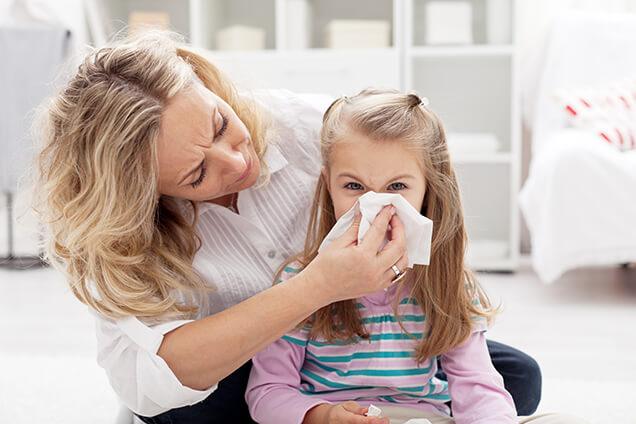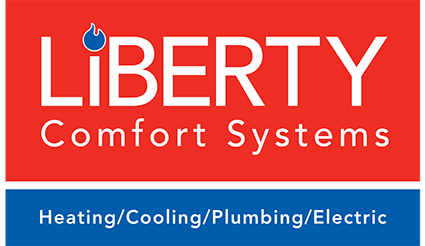
The air quality inside your home has a huge impact on your overall health—in fact, the EPA estimates that people spend up to 90% of their time indoors. This means that it’s essential to make sure the air you breathe is as clean and healthy as possible. Here are some easy ways you can improve indoor air quality in your home.
1. Invest in a Quality Air Purifier
Investing in a quality air purifier is an easy way you can improve indoor air quality. Keep reading to gain insight into what air purifiers are, their benefits, and how to choose the right one for your home or office.
What Are Air Purifiers?
Air purifiers are devices that clean the air by removing pollutants, allergens, and other harmful particles from the air you and your family breathe. They work by filtering the air through a porous material, trapping the impurities, and releasing clean air. There are different types of air purifiers in the market, including HEPA filters, activated carbon filters, and ionizers. Some air purifiers come with multiple filters to remove different types of pollutants from the air.
Benefits of Investing in a Quality Air Purifier
Investing in a quality air purifier can improve indoor air quality in many ways. First, air purifiers remove air pollutants, allergens, and other harmful particles from the air, which reduces the risk of respiratory problems and allergies. Second, air purifiers can help reduce unpleasant odors in your home or office. Third, air purifiers can help people with asthma, COPD, and other respiratory conditions breathe easier by removing airborne particles that can increase the severity of their symptoms. Finally, air purifiers can improve overall indoor air quality, which can have a positive impact on your sleep quality, energy level, and overall wellness.
What Should You Consider When Choosing an Air Purifier?
When choosing an air purifier, there are several factors to consider. Room size is an essential factor, as air purifiers are designed for specific room sizes. It would be best to consider the types of pollutants you want to remove from the air and choose an air purifier with the appropriate filters. Noise level is another factor, as some air purifiers can be noisy, making it difficult to sleep or work in the room where it is placed. Energy efficiency is also a consideration because some air purifiers consume more energy than others. Finally, you may also want to think about the cost of replacing filters, as some air purifiers use filters that are more expensive or need to be replaced more frequently.
2. Open Windows Frequently
Here is everything you need to know about opening windows to promote healthy indoor air quality.
Why Opening Windows Is Essential in Improving Indoor Air Quality
The easiest way to improve indoor air quality is by introducing fresh outdoor air into your home. Regular ventilation can help reduce the concentration of pollutants in your indoor air. Also, improved airflow can help reduce indoor humidity levels, which can prevent mold growth and other issues related to dampness.
When Is the Best Time to Open Windows?
The timing of opening windows is also critical when it comes to improving indoor air quality. For instance, opening windows during rush hours when pollution levels are high outside is not recommended. Instead, it would be best to open windows early in the morning or late in the evening when outdoor air pollution is at its lowest levels. Additionally, ensure that the windows stay open for at least fifteen to thirty minutes to allow clean air to circulate through your indoor space.
How to Ensure Maximum Airflow When Opening Windows
When opening windows, it is advisable to open ones on opposite sides of your house to create cross-ventilation. Cross-ventilation allows fresh air to circulate, reducing stagnant air that may be trapped in your living spaces. Also, ensure that you have proper screens that allow clean air in, but keep insects and debris out. Clean the screens regularly to ensure maximum airflow.
3. Vacuuming and Dusting Regularly
Poor indoor air quality can cause a variety of health issues, including respiratory problems, allergies, and asthma. One of the easiest ways to improve indoor air quality is by regularly vacuuming and dusting your home.
How Vacuuming Helps Improve Indoor Air Quality
Vacuuming is not just about removing dirt from your floors; it is also about removing dust and other microscopic particles from your carpets and upholstery. Dust mites, pet dander, and pollen can accumulate in your home’s fabrics and flooring, leading to allergen buildup and worsening indoor air quality. Using a vacuum that has a high-efficiency particulate air (HEPA) filter can help remove these particles and reduce the potential for respiratory issues.
How Dusting Helps Improve Indoor Air Quality
Dusting is just as important as vacuuming when it comes to improving indoor air quality. Dust can build up on surfaces quickly, making it easy for irritants to linger in the air. By dusting regularly, you can remove dirt and other particles from surfaces like countertops, shelves, and furniture, reducing the potential for allergens and other irritants to accumulate in your home.
4. Add Houseplants to Your Home Décor
Not only can houseplants enhance the aesthetic appeal of any living space, but they also naturally filter toxins from the atmosphere. Here are the benefits of houseplants and easy ways to add them to your home decor.
Why Are Houseplants Important for Indoor Air Quality?
Houseplants work as natural air purifiers by absorbing harmful chemicals and toxins found in the air. They also release oxygen and help increase humidity levels, making the air in your home easier to breathe. Some examples of toxins that houseplants filter out include formaldehyde, benzene, and carbon monoxide. These toxins can be found in everyday household items such as cleaning supplies, furniture, and even dry-cleaned clothing. By having houseplants, you can improve the air quality in your home and reduce the risk of health issues associated with poor air quality.
What Kinds of Houseplants Are Best for Indoor Air Quality?
Some of the best houseplants for improving air quality include the spider plant, peace lily, snake plant, bamboo palm, and Aloe Vera. These plants are low maintenance. They also thrive in low-light conditions, making them perfect for many living spaces. When selecting houseplants, it’s important to consider the size of your living space to ensure your plants have enough room to grow.
Contact the Professionals
Liberty Comfort Systems is always ready to provide its top-notch heating, plumbing, and cooling services to the residents of Anoka, MN and the surrounding areas. Homeowners can get their cooling systems upgraded for the summer heat or receive help with their plumbing needs. If you are having electrical issues in your home, we also provide comprehensive electrical services and will quickly solve the problem. Our expert technicians are qualified to handle any job, no matter how big or small. Contact Liberty Comfort Systems today to learn more about our services.

